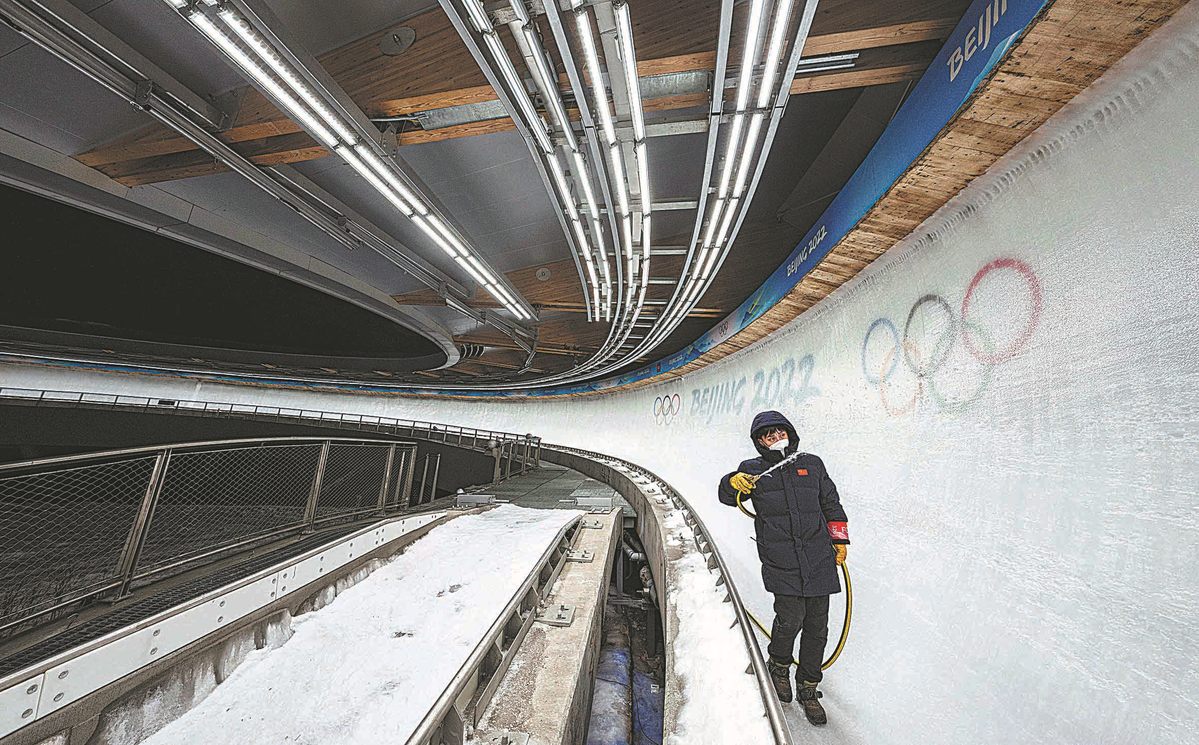Winter Olympics point way to a greener world


Measures taken
In addition to meeting power demand at all venues with renewable energy, Games organizers took a series of other measures to reduce carbon emissions, including fueling the Olympic torch and powering buses with hydrogen, which has zero emissions. They also reused venues built for the 2008 Beijing Summer Olympics.
According to the Beijing Organising Committee for the 2022 Olympic and Paralympic Winter Games, total greenhouse gas emissions from the two events from 2016 to next year will be equivalent to about 1 million metric tons of carbon dioxide-some 0.6 million tons less than those for the Winter Olympics in Pyeongchang, South Korea, four years ago.
Organizers of the Beijing Games vowed to offset all carbon emissions with carbon credits, some of them from forestry projects.
A recent analysis from S& P Global Platts, a provider of information, benchmark prices and analytics for the energy and commodities markets in London, said, "While this is not the first sporting event or Olympics to reduce its carbon footprint, it sets the template for how future global events will be conceptualized-focusing first on reducing emissions instead of relying on offsets, which industry experts admit are a last resort."
At the opening ceremony for the Winter Olympics on Feb 4, a snowflake suspended in the air after a torch was placed inside it replaced a traditional Olympic cauldron. Instead of roaring fire, the tiny flame in this cauldron was said to be the smallest in Olympic history.
Other torches used on the Chinese mainland for the Winter Olympics were also fueled by hydrogen, the first time zero-emission torches had been used for the Winter Games.
Not only did the torches avoid consuming thousands of cubic meters of fossil fuel gas per hour, as those used in previous Games did, the technologies used for them may help better promote the safe use of highly reactive and flammable hydrogen.
For decades, hydrogen has been stored in high-pressure tanks, but using it to fuel Olympic torches in such a confined space is a lot more challenging.
Researchers for the Olympic torch project from the 101st Institute of the Sixth Academy of China Aerospace Science and Industry Corp said there are challenges not only in designing the tanks for the torches, but also in making a valve to reduce pressure from the hydrogen released to control the shape of the flame.
It took the team more than a year to design a successful valve system. Li Xiaofeng, director of the torch project, said his team reduced the weight of the pressure control valve to only 290 grams. This valve combines with two others to help the burner and storage systems.
Li said: "In the future, if we want to popularize the use of hydrogen, then cheap and safe pressure release valves must follow. Over the years, we have made great achievements in producing valve products independently."
























